The travel writer Pirch writes in 1929, among other things, that the Poreč region is “the wildest and most inaccessible part of Serbia” and that “nothing stands out more than this huge, almost unusable wealth of wood”. One generation of trees suffocates and suppresses the next. “One of the greatest Serbian scientists, Jovan Cvijić, confirmed this in 1887 and found that this area is “covered with inaccessible forests”, that it has “the appearance of real primeval forests “with different tree species and with” many bushes”.
Forestry in Djerdap National Park
The Djerdap area has always been rich in forests.
The people used this wood for baking bread, building and heating, for fortification, etc. Major exploitation of these forests began in the 1980s, and only with the passage of the law on forests, the establishment of various organizations for forest exploitation, wood processing and production of various types of wood gained importance in forestry. Until the establishment of the society for protection and development “National Park Djerdap” in 1990, the forests in the area of the Djerdap National Park were managed by the forest administration through various state-owned companies.
The forests in the Djerdap National park, which are state-owned, are managed on an area of approximately 37,000 hectares by the “National Park Djerdap” Donji Milanovac, which is divided into twelve administrative units. The company also provides expert advice in the forests on an area of approximately 12,150 hectares to other owners. The current total volume increase in state forests is about 163,000 m3 and the total wood volume is over 9000000 m3.
The forest area of the mainland of the Djerdap National park is approximately 84%. With around 1100 vascular plant species, around 70 species of wood and shrub, the area represents a significant biodiversity of the dendrological flora. In terms of vegetation, the forest phytocenoses is characterized by a class of Euro-Siberian deciduous forests (Querco-Fagetea Br.-BI. Et Vvieg . 1937), a series of oak forests (Quercetalia pubescentis Br.-BI. 1932), black hornbeams, hornbeams (Ostryo – Carpinion Orient Ht 1954) and forests of the Serbian hornbeam (Carpinetum Orientalis serbicum). About 60 species of forest communities are recorded in Djerdap, 35 of which are relics. Six developmental vegetation series are also found here, which is unique in Europe.
The protection of the area is classified and according to the law on national parks, the first protection level covers 8.01% of the total area, mainly the most protected and ecologically valuable part of the forest ecosystems.
The most important economic tree species, but also edificators of the forest ecosystems are sessile oak (Quercus petraea agg. Ehrendorfer 1967), beech (Fagus moesiaca L.), white ash (Fraxinus excelsior L.), maple (Acer spp.), tilia (Tilia spp.) etc. Priority is the maximum production of the highest wood quality while protecting and promoting the habitat and biodiversity of the area.
The main endemic varieties and relics in these forest ecosystems are bear hazel, native walnut, hackberry, yew, holly, lilac and others.
In the National park, the protection of forest ecosystems is very important, thanks to the monitoring system that the company carries out independently, but also with other responsible institutions. Forest management activities are carried out according to forest management plans. In accordance with the law on forests, the company regularly carries out forest management and technical infrastructure design activities. Scientific and research activities can be independent, but also in cooperation with various interest groups and institutions.

























